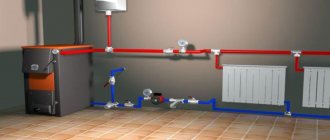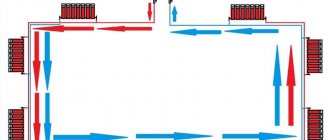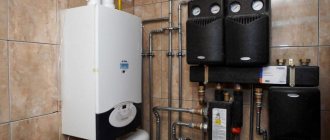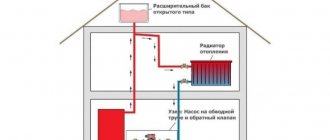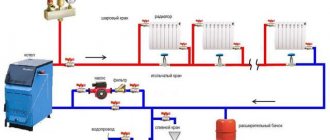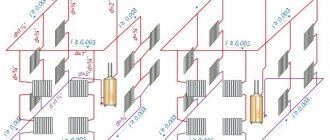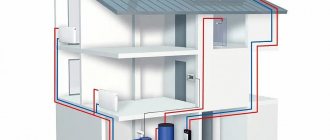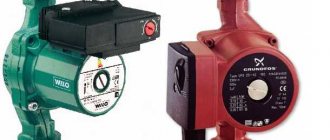During the winter period in Russia, housing needs to be heated even in the southern regions, which determines the demand among our consumers for many types of stationary and portable heating equipment. A large niche in the Russian market of heaters offered by foreign and domestic manufacturers is occupied by a group of infrared devices with a general principle of influencing the environment, but consisting of subgroups that differ in design and, as a result, functionality and efficiency.
Let's take a closer look at one of the types of infrared devices for heating homes - a wall-mounted film heater, which has been used in everyday life relatively recently, but, due to a number of advantages, is already in stable consumer demand.
Operating principle of IR heaters
Infrared rays are non-visible electromagnetic waves with a length from 0.74 microns to 1.5-2 mm. Any heated body becomes a source of infrared radiation - an emitter, and the emitter is heated by converting the energy of one of the types of energy carrier - electric current, gas, solid or liquid fuel - into heat.
Infrared radiation, encountering an obstacle in the path of propagation, causes vibration of its surface layer with an increase in the speed of movement of molecules, which causes an increase in the temperature of the object to a certain depth.
The wavelength range of infrared radiation, in turn, is divided into the following components:
- short-wave – 0.74-2.5 microns;
- average wavelength – 2.5-50.0 microns;
- long-wave – 50.0-2000.0 microns.
The intensity of heating of the surface of objects depends on the temperature of the emitter - the higher it is, the shorter the wavelength of infrared radiation and the greater the depth of heating of the surface of the obstacle. When IR rays propagate, they do not change the temperature characteristics of the transit medium - the air is heated not by their passage, but by the transfer of heat to it by heated objects.
The method of heat transfer through infrared radiation is not associated with conduction or convection, so IR heaters are capable of transferring heat even through a vacuum.
Infrared Heating Basics
Long waves are the most comfortable for people. Since the range of infrared radiation itself is quite large, scientists divided it into three subranges:
- Short - it is adjacent to the visible part of the world.
- Average.
- Long.
The hottest objects emit shorter wavelengths. The warmer the object, the shorter the wave.
PLEN heating is an alternative to the outdoor heating system used by nature. The PLEN system, mounted on the ceiling, allows you to obtain thermal comfort in the same way that the Sun gives it to all living things. Long-wave radiant energy emitted by heating elements heats objects, floors, cars, which, in turn, accumulate it and then release it into the environment. At the same time it remains natural.
That is, the meaning of what has been said comes down to the fact that in order for the room to become warm, it is not at all necessary to heat the air in it.
Film electric heater device (PLEN)
*
All IR heaters are divided into high-temperature short-wave and low-temperature long-wave. Film-type heaters belong to the second group.
Visually, a film IR electric heater is a flexible sheet or strip of a certain format. If the model is not decorative (a picture heater), then the transparent outer layers allow you to see the location of the component elements.
Important! PLEN is an abbreviation meaning “film radiant electric heater”, and not a registered trademark.
Structurally, any type of film-type household heater includes the following components:
- resistive type heating elements - made of carbon-containing materials or metals, tape or plate, capable of heating up to 35-55 degrees when an electric current passes through them;
- heat distributing base - one or two layers of thin aluminum foil on which resistors are mounted to evenly distribute the heat from their heating over the surface of the screen;
- thermostat with temperature sensors;
- two protective layers of laminated film with a melting point of up to 210 degrees, between which there is foil with heating elements;
- cable for connecting PLEN to the network.
The total thickness of the heating sheet does not exceed 1.5 mm.
Schematically, PLEN can be depicted as follows (the thermostat is installed separately):
1 – contacts for connecting the device to a 220 V network;
2 – flexible two-layer shell made of polymer film on a supporting lavsan or polyester base;
3 – points of industrial, carefully insulated connection of the supply wire with the contacts of the heaters (independent cable replacement is not provided);
4 – heating resistive elements (tape or separate plates connected by conductors);
5 – aluminum foil;
6 – hologram to protect the heater from counterfeit production.
Connection
It’s not hard to figure out how to connect an infrared heater - it operates on a 220-230 V network, so the simplest and most obvious way is to plug it into an outlet. At least, mobile models are connected to sockets.
Panels or film systems are connected to each other in parallel, then connected to the thermostat (control panel), after which the wire (phase, neutral and ground) is pulled directly to the machine located in the distribution panel. This allows you to bypass all the wiring brought into the apartment or house. Most often, a separate automatic machine is installed to heat the apartment, which is triggered when there is a heavy load or a short circuit. The rest of the wiring in the apartment is connected to another machine. This allows you to correctly distribute the loads generated during the operation of infrared heaters. If you “hang” a powerful heating system on the existing apartment wiring, then when the heating system and, for example, an electric oven, air conditioner or iron are operating simultaneously, overloads are possible. In rare cases, this leads to a fire, although most often automatic devices are triggered.
However, to create a cozy warm corner with a small number of panels with a total power of up to 2 kW, it is possible to connect an infrared heater to an outlet, that is, the general electrical wiring in the house.
Operating principle of PLEN
*
When the power cable is connected to the network, the resistive elements heat up to a preset temperature value (35-50 degrees) within 10 seconds. Film heaters for non-domestic purposes (for mini-saunas, dryers of agricultural products), used in rooms with ceiling heights of more than 3.5 m, have resistive elements of wire, tape, plate design made of nichrome, fechral or multicomponent alloys, providing a higher temperature heating
The heat of the heaters is transferred to the foil and, due to the high thermal conductivity of aluminum, is evenly distributed over its surface, which allows the heater to generate IR radiation of equal intensity over its entire area. When the air in the room reaches the set temperature value, the film heater turns off based on a signal from the temperature sensor in the thermostat, and objects heated by radiation continue to give off heat. When the temperature in the room drops by 1 degree, the thermostat will turn on again, and the film heater will perform a new radiation cycle.
A correctly calculated combination of the material of the reflective layer, its thickness, and the arrangement of resistive heaters ensures the conversion of electricity into heat, and then into infrared radiation with a wavelength of 8-15 microns favorable for human perception.
Important! When the current increases or the thermostat fails, the temperature of the resistive graphite heaters will increase, which will lead to their destruction and failure of the household film heater as a whole, that is, the resistive elements also perform the protective function of fuses.
Film heaters
Film heater
Film IR heaters are devices used for general or partial heating of a room. They consist of film, foil and heating elements that produce long-wave infrared radiation. The devices also have special sensors that turn off the system when the air temperature reaches a predetermined level, and when it drops below the minimum acceptable level, the heater is activated. Thanks to this, electricity is saved - the device does not just work.
Some film heaters have thermostats with the ability to program the temperature for 24 hours. In this case, while there are no people in the room, the IR device does not turn on, and some time before the owners return, the device starts working and manages to warm up the house. However, such heaters cost significantly more than simple models.
Types of film heater
One of the main differences between film-type electric heaters is their format and size. PLENs are produced in the form of tapes of various lengths and widths. Independent correction of the dimensions of such films is impossible, therefore PLENs are produced in a wide range of dimensions, allowing you to choose the best option. The most common sizes of tapes in width are 35, 51 and 65 cm.
Films with a width of 35 and 51 cm have two zones that are free from the location of resistive elements and are intended for installation using a stapler - along the edges. Ribbons 65 cm wide have three such zones - two at the edges and one along the middle (as an option - two at the edges and between them transverse with a certain pitch).
Flexible film IR heaters can be installed on both vertical and horizontal surfaces - the design of film-type electric heaters does not depend on the location of its installation, with the exception of PLEN-pictures, which by definition should be located in places of the best view - on the walls. The classification of a particular film heater as a wall, floor or ceiling device is determined only by its design location - an important factor affecting the efficiency of this IR device. Thus, a film heater on the wall, after being installed on the ceiling, in everyday life turns into a ceiling heater.
Let's consider options for placing PLENs in premises in order of increasing efficiency of their use.
Wall arrangement of film heaters
*
Placing PLENs on the wall is the least effective due to the limited sector of influence of infrared radiation on the enclosing structures - most of the infrared rays heat the surface of the wall opposite, with almost no effect on the floor and ceiling.
Film devices permanently mounted on the wall are effective as the main means of heating only if the opposite base has a significant area - then the heat transfer from its heated surface into the air will be quite noticeable.
If the area of film heaters installed on the wall is not significant, and the base, on the contrary, also has window openings, then the efficiency of such an IR heater will be low. But small-area stationary wall-mounted film heaters are convenient as an additional means of heating - to increase the comfort of the temperature regime of a certain place or zone in the room.
A type of film-type wall heaters are portable IR devices with artistic decoration that imitate paintings. In order for their use to be rational and effective, picture heaters must be used in small rooms for heating, for example, a workplace, or in groups, the total heat transfer area of which will be commensurate with the size of the room.
Floor placement of film-type IR heaters
Infrared radiation from devices located in this way affects the floor covering and ceiling. A warm floor surface increases the comfort of human contact with it - you can walk without shoes, sit or lie on the floor, etc. In addition, the transfer of heat from the floor to the cold lower layers of air in the room also warms the room, as it causes the occurrence of convective flows. But the energy of that part of the IR rays that penetrates the floor covering is spent on heating the ceiling, which is less efficient - the ceiling base has little need for this, since its temperature is already quite high as a result of convection.
Important! It is not advisable to place film IR heaters in furniture locations - bulky objects made of materials with low thermal conductivity create barriers to infrared radiation.
Ceiling installation of infrared film heaters
When using film-type heating devices as the main means of heating, placing them on the ceiling is the most effective, since this arrangement ensures that all enclosing structures of the room, regardless of configuration, and the objects in it are exposed to radiation.
Important! When choosing a ceiling for installation of PLENs, it is necessary to take into account that the efficiency of heating with IR rays decreases with increasing distance to the emitter. Film-type infrared heaters are low-temperature, long-wave devices, so their use at ceiling heights of more than 3.5 m is irrational.
The advantage of ceiling placement of PLENs, in addition to high heating efficiency, is the minimal risk of accidental damage to the heater, which is located at a fairly safe distance from the traffic zone. However, there are also disadvantages - the location on the ceiling makes the PLEN vulnerable to leakage from above, and installation work at height is more labor-intensive.
Procedure for installing a warm ceiling
The warm ceiling is installed in the following stages:
Laying thermal insulation
Thermal insulation is laid on the profiles in order to eliminate the possibility of heat radiation upward. To prevent the heat-insulating mats from sliding off the wings of the profiles, throughout all spans, at certain intervals, it is worth sticking safety pieces of technical tape, as shown in the following photo. In the spans the mats are laid end to end. There should be a gap between the end of the mat and the wall.
Almost the entire surface of the suspended ceiling is laid with mats.
Laying electrical wiring
The central span is laid last with heat-insulating mats. Before laying it, electrical wiring is thrown onto the thermal insulation, which will provide power to the entire warm ceiling.
There should be a “window” in the suspended ceiling in the middle of the room through which the wire of the lighting fixture hanging from the ceiling will pass. Because of this "window", the heating film laid in the central span consists of two separate sections. This must be taken into account when organizing their power supply. Therefore, the power cable with two sockets must fit into this window. The rest of it is laid along the wall.
To power the ceiling electrical wiring, the supply cable can be laid down the wall in a groove or in a cable channel. The photo shows that a hole is drilled in the wall, and the cable is pushed through it to the apartment meter.
Installation of heating film and electrical connections
During work, the heating film can be secured to the ceiling using double-sided tape. To do this, tape is pasted at certain intervals throughout the room across the profiles.
Then the protective film is removed from the double-sided tape as the work is completed and the heating film begins to be fixed. Moreover, they glue it strictly BETWEEN the profiles. If the film gets on the profile, it can easily be damaged by screws when attaching drywall, and the system will not work.
In the central span, as mentioned above, the heating film is installed in two separate panels. This allows you to create a lighting fixture for installation.
Through the formed “window”, two central panels are connected to the power supply system. All wires are laid on top of heat-insulating mats. A lighting lamp is also released into the created “window”.
Then all the power wires hanging from the wall are connected to the sockets of the electrical wiring laid on top. In this case, all wires must remain above the profiles.
Checking the integrity of the warm ceiling system
Having completed all the connections, we go into the next room where the supply wiring was terminated. Taking the wires coming from the warm ceiling, we measure the value of its resistance. If it is expressed by a specific number, we can conclude that there is no damage to the system. As you can see in the photo, the resistance is about 45 ohms. Therefore, the system is working properly.
Upon completion of work, this measurement should be repeated to once again ensure that there is no damage.
Installation of vapor barrier film
A vapor barrier film is necessary to protect the electrical system of a warm ceiling from condensing moisture. Its installation is again done using double-sided tape, which this time is glued directly to the profiles.
The film itself is attached with tape across the profiles. Moreover, all adjacent panels must overlap to ensure the necessary tightness and moisture protection.
Fixing plasterboard sheets
To lift and support drywall sheets, it is very convenient to use a sheet lifter.
We recommend: Flushing the heat exchanger of a gas boiler: nuances of the procedure and review of cleaning products
The sheets held by the sheet lifter are fixed, as usual, with self-tapping screws screwed into the profile.
Having secured the drywall along the edges, it is necessary to mark the location of the remaining profiles. With additional fixation, this will prevent you from accidentally damaging the heating film with a self-tapping screw.
Connecting the thermostat and checking the integrity of the “Warm ceiling” system
The diagram for connecting the wires to the thermostat is shown on the back of the device.
The wires coming from the warm ceiling are connected to the side terminals. It is on them that the system resistance is re-measured. If there are no faults in the system, then its value should be equal to that previously measured.
The indicator part is attached to the thermostat with latches.
The indicator is a rather multifaceted device. It displays not only the current temperature, but also the time. With its help, the desired temperature is set or programmed.
Characteristics of an electric heater of film construction.
When choosing a film IR heater, you must be guided not only by its size - PLENs also have other characteristics, including those that are important for specific conditions:
- voltage of current consumption is mainly 220 V, but they are also produced at 110 V;
- power - up to 500 W, energy consumption per square meter of film heater (power density) can range from 70 to 170 W;
- maximum heating temperature – 35-50 degrees;
- current consumption – 0.7-1.2 A;
- specific gravity – up to 350 g/m2.
To make the description clearer, we summarize the data on the characteristics of film heaters in relation to their standard sizes:
*
Calculation of PLEN energy consumption using the example of a house of 100 square meters. m
Our homes lose the most heat through windows, doors, floors and roofs. By choosing the best building and finishing materials, you can save a lot on heating costs.
We have already calculated how much film is needed. But will heating really “eat up” so much electricity? In fact, the costs will be small. Firstly, PLEN heating does not work around the clock - it turns on and off, obeying the thermostat. And secondly, infrared heating is economical. Therefore, the costs will not be very high.
If the house has good thermal insulation, then PLEN will work for about 10-15 minutes per hour . Based on the average cost of 1 kW of energy at 4 rubles, the cost of round-the-clock operation for a house of 100 sq. m would be 960 rubles per day. If the heating runs for 10 minutes, the daily consumption will be only 160 rubles. This will cost approximately 4,800 rubles per month.
By taking care to eliminate heat losses, you can ensure a significant reduction in space heating costs.
Installation of film-type IR heaters
Installation of flexible film heaters, regardless of the installation location, does not require the contractor to have high-level professional skills, but must be carried out in compliance with the following rules:
- the installation site of the PLEN must be level and dry;
- cutting rolls, if provided for by the model, should be performed only according to the markings specified by the manufacturer;
- testing the functionality by plugging in a rolled-up heater is prohibited;
- the length of one strip film fragment should not exceed 8 m;
- adjacent strips of the heating system are located at a distance of at least 5 mm;
- bending the PLEN at an angle of more than 90 degrees is not allowed;
- installation of the film to the base is carried out with staples using a construction stapler or special fasteners (the use of ordinary nails and self-tapping screws is not effective);
- It is prohibited to carry out installation work at sub-zero air temperatures - after warming up the room, the film strips will increase in size and form folds.
Sequence of installation of film IR heaters
To protect against overheating, the base for placing the PLEN must be equipped with a foil reflective screen that acts as a heat and water insulator, for example, penofol, isolon.
The protective coating is mounted on the base with an overlap of adjacent edges of 3-5 cm; to speed up the process, it is advisable to use special fasteners for fastening, which are available in a wide range on sale.
From above, the joints of the screen strips are glued longitudinally with special foil tape.
The elements of the film heater are mounted on top of the laid screen - after preliminary layout and in accordance with the installation instructions supplied with the device. Installation is carried out taking into account the rule - for 1 square meter of flexible film there should be 8-10 fastening elements.
When the heating circuit is ready to be installed, it is connected to the thermostat, which should be located at a height of 1-1.5 m from the floor, and the system’s functionality is checked.
In addition, to correctly monitor the temperature in the room, the thermostat must be located away from other heating devices, have a thermal insulation pad underneath, and be protected from direct sunlight and drafts.
If the results of testing the IR device are positive, finishing materials are laid - floor covering or suspended ceiling, which are installed with a gap of 10-15 mm between the cladding and the film.
Important! There are no materials that are absolutely transparent for PLENs - any finishing finish on top of the film is a screen that attenuates radiation to one degree or another.
Read on the topic - how to attach, lay and glue penofol.
Adviсe
The decision to install a particular heating system in a private home should be made carefully, since few people decide to redo the entire property. If there are problems with the gas supply, then you can choose an alternative - PLEN heating.
Laying PLEN on the floor
It is easy to install it yourself, but do not forget about the choice of finish. And also correctly calculate the required power and location of the thermostat. During operation, you will appreciate all the benefits of “warm film” in your home.
Some notes and recommendations for use
- One should not expect high efficiency from film IR heaters, as well as from any other heating units, in the absence of thermal insulation of the housing enclosing structures.
- Marketers' statements about the PLEN wavelength of 8 microns, supposedly optimal for human perception, do not correspond to reality - the radiation of IR heaters is always in a certain range and cannot consist of waves of any one length.
- Installing PLEN in one room, even over the entire area of the enclosing structures, will not solve the problem of heating other rooms for the house.
- The operation of PLEN is not accompanied by a decrease in oxygen in the room air, so there is no need to increase the frequency of room ventilation when using film heaters.
- It is not necessary to turn off the PLEN system in the summer - just set the thermostat to the desired temperature value.
- The durability of infrared film heaters declared by manufacturers (up to 50 years) is a hypothetical value, since PLENs began to be produced relatively recently.
- The safety requirements for household electrical appliances, including film-type ones, are set out in GOST R 52161.2.96-2006.
Manufacturer's choice
The characteristics of PLEN are approximately the same, since the same production technology is used, so statements about the advantages of a particular brand are not always reliable. PLEN has proven itself well, in particular EVO 300; you can buy this film in almost any large city, even Khabarovsk or Irkutsk. There are also many good reviews about Fracarro and Orient heating plates.
However, it should be taken into account that energy-saving technologies do not stand still, so new products regularly appear on the market that make it possible to reduce heat loss, and, accordingly, electricity consumption. Therefore, when designing alternative heating systems, this issue should be carefully studied.
conclusions
We looked at the options and prices for heating a country house. The cheapest types of fuel are gas and coal. It is possible to connect to a free geothermal heat source, but the cost of installation is not yet affordable for most consumers.
In any case, when planning a home heating system, take into account the availability of energy sources and choose the best option
Take the time to do careful calculations and consult with heating experts. Their professional opinion will help you make the right choice.
Most owners of private houses are accustomed to gas heating from a boiler, which is considered the most economical and affordable. However, what about those where it is not possible to install such a heating system? An excellent alternative option is PLEN heating. Specifications, prices and reviews vary between models. We will analyze all the features and independent installation of such a “warm film”.
Installation option in a wooden house
Alternative and traditional heating of a country house prices and options
Let's consider the main types of fuel that can be used to heat private households in our latitudes:
- firewood and coal;
- fuel oil, diesel, gasoline, mining;
- network and bottled gas;
- electricity (grid, solar or wind);
- geothermal energy.
Each of the listed types has its pros and cons
When choosing the type of heating, it is important to take into account the financial capabilities of the family to purchase and operate the system, the availability of fuel and the possibility of combining different types of fuel
It is worth considering that cheap equipment is usually short-lived
Saving on qualified technicians can result in system problems
That is why it is important to think through everything down to the smallest detail, draw up a project competently and entrust the work to professionals
Properties
The heater is produced in the form of a film material, available in rolls. Covering: plastic film. Thanks to the carbon ball and copper tires, heat transfer is 100%. The film heater can be designed as an additional, main heating system. The film is mounted on walls, ceilings, or hung on walls in the form of paintings or panels.
Used for heating production and storage areas, garages, sports grounds, baths.
Characteristics of film heater
What is a heating system project?
For design, the area of heated premises, boiler power and probable heat loss are taken into account. The number of batteries in each room and the length of the pipes are calculated. The number of windows, doors and the nature of wall materials also matter.
Detailed calculations allow you to optimally spend funds and further minimize system maintenance costs. Water heating can be included in the heating system.
When designing a system, it is necessary to take into account the climatic characteristics of the region. For example, in the conditions of the far north, a liquid fuel boiler will be ineffective, since its fuel loses its ability to ignite at minus thirty degrees.
How to choose the right option
The variety of choice of heating film itself can puzzle everyone. You should always start from the initial conditions. So, you have your own heating, and the back room, intended for the nursery, does not warm up well and has the lowest temperature. What to do? There is an exit. Under the existing laminate flooring, you need to install a heated floor system. This is where low-temperature films like Caleo, Heat-Plus, Power Plus, RexVa XiCa and many others will come to your aid. Installation is not that difficult. You can, of course, get by with a warming mat, but this is an electrical appliance, and you cannot leave a child unattended on it.
If you don’t want to redo the floor in the room, you can simply attach heating baseboards, which will make the task of insulating the room much easier. If you want to insulate the loggia, but do not want to change the floors in it, a good option would be to insulate the walls with infrared film. You can also apply panels on both sides of the loggia under the window and opposite the street windows. It would be best to hang infrared panels from the ceiling. It will be quick; you don’t need to remove furniture from the loggia to open access to the walls.
Caleo GOLD 230-0.5 230 W
Thin infrared film rolled into a roll. Mat length – 200 cm, width – 50 cm. Heating area – 1 m². Power consumption 230 W. The film is protected from overheating. It is fireproof (has the ability to self-extinguish).
Advantages:
- easy to install;
- heats up quickly;
- warms up large surfaces well;
- turns on and off using a thermostat.
Flaws:
- Doesn't warm up the loggia well enough, but maintains the heat.
Home Guardian Angel
The wall heater adds warmth and coziness thanks to the image of a guardian angel.
Heating area - 15 sq.m, power 220 V, maximum heating -100 C. Can be used in an office, garage, loggia, apartment. Attached to the wall with screws.
Advantages:
- does not dry out the air;
- does not burn oxygen;
- decorates the room;
- creates heat;
- does not burn;
- can work around the clock;
- consumes little electricity.
Flaws:
- No.

